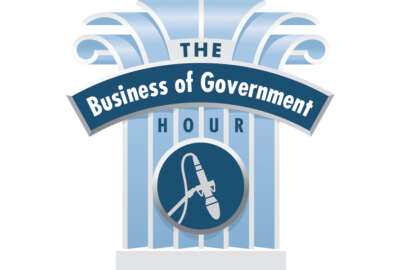Expect more shifts in IT procurement language to reflect sustainability goals
General Services Administration sees a shift in contract obligation and business volume data where sustainability is concerned.
The General Services Administration sees a shift in contract obligation and business volume data where sustainability is concerned. Agencies increasingly rely on as-a-service models for enterprise IT infrastructure, requiring less owned physical infrastructure hardware.
Laura Stanton, assistant commissioner for IT Category at GSA, said agencies are buying the capabilities they need through industry, and letting industry manage things on the back end. That shrinks the footprint of data centers, which consume about 2% electricity in the U.S., according to the Energy Department. She said sustainability is built into contracting language more regularly, which aligns with the Biden administration’s strategy to harness federal procurement power for the sake of environmental sustainability.
In GSA’s enterprise infrastructure solutions contract for network infrastructure, “We’ve added sustainability criteria into that contract, requirements for climate change and adoption, sustainability and green initiative, supporting environmental sustainability practices through the use of energy efficient, virtual and streamline technology that facilitates agile and expansive network communications,” she said on a panel as part of GSA’s Data Sustainability Summit this week.
There is also the complex commercial satellite communications solutions contract, which has climate change risk language, and mitigation has a contract deliverable to prepare and update, as needed, a corporate climate risk management plan. The plan would identify and addresses the mitigation of climate change risks to land-based equipment and services.
Sustainability requirements are also in the contract for government strategic solutions for desktops and laptops. Those now have a mandatory electronic product environmental assessment tool (EPEAT) that provides a standard configurations and minimum requirements for desktops, laptops, tablets and client devices, Stanton said.
“So we’re building it in to make sure that we have sustainable equipment that we’re making available to the federal government, so that this means that the agencies don’t have to add in those requirements when they’re putting their task orders together,” she said.
She referenced a report from technology research and consulting firm Gartner, which predicted that by 2025, more than 85% of organizations will use a cloud-first principle and that over 95% of new digital workloads will be deployed on cloud-native platforms, compared to 30% in 2021.
Following that trend, the upcoming cloud-focused blanket purchase agreement, Ascend, which Federal Acquisition Service Commissioner Sonny Hashmi shared on Wednesday, aims to reduce burdens for agencies and build in minimum thresholds for security, data ownership, and common terms and conditions. Stanton said GSA is also writing climate goals into that BPA.
“We’re in the early stages, through this BPA, of writing the environmental directives related to carbon-pollution-free energy for data centers, and will provide those cloud capabilities,” Stanton said. “So we’re looking at geothermal, hydroelectric, hydrokinetic, nuclear, solar, wind and the like, as [well as] looking at how do get to carbon-pollution-free energy in the data centers provided through this vehicle.”
Speaking at Thursday’s summit, Ben Levin, senior manager of Technology Assessment and Resource Development at the Green Electronics Council, said the full lifecycle of IT products needs to be considered when talking about “green” electronics. That includes the extraction of raw materials, manufacturing, processing and assembly, product longevity, greenhouse gas emissions through each of those phases, and protect of the labor force in the supply chain.
As one of the most famous proponents of green electronics, the Environmental Protection Agency’s ENERGY STAR program. An ENERGY STAR-certified server saves on average about 30% of the energy compared to a non-certified server, or about 650 kilowatt hours per year. Servers are measured for efficiency in the active state, according to Ryan Fogle, ENERGY STAR Data Center Product Development and Marketing manager.
“So how much work can you get done per watt of energy, which means that you, in essence, can complete more work with less hardware,” he said. “So if you can do more work with less energy, that means that there’s potentially less servers that you need to get that same amount of work done. Less servers tends to mean that there’s less support dollars needed for things like licensing and software fees, and between those fees, the actual cost of the servers, which tend not to be cheap.”
Multiple tools and guidance from EPA and GSA exist to help agencies procure more sustainable IT.
The Sustainable Facilities tool has a Procurement Professional section with template steps to ensure agencies are evaluating the total value when it comes to sustainability, plus with Federal Acquisition Regulation. The GSA Advantage catalogue lets users search for products by eco-friendliness, said Paul Morris, IT Hardware Category manager at FAS. In addition, ENERGY STAR has examples of procurement language on its website and its commercial and industrial offers designations to data centers, Fogle said.
Copyright © 2025 Federal News Network. All rights reserved. This website is not intended for users located within the European Economic Area.
Amelia Brust is a digital editor at Federal News Network.
Follow @abrustWFED






